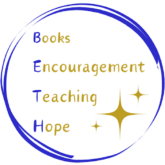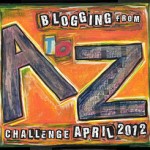 I’m not referring to the naming of characters here, although that is one of the joys of writing for me.
I’m not referring to the naming of characters here, although that is one of the joys of writing for me.
Back in 1947, Viktor Lowenfeld, a professor of art education, delineated the stages in a child’s artistic development in his book Creative and Mental Growth. It says something to me that the 8th edition of this text is still available and in use.
One of the stages Lowenfeld notes is the “Scribble Stage” — a stage which I’m sure we can all readily identify in children. This period of a child’s progression in the understanding of art has four distinct substages, according to Lowenfeld, the final of them being the “Naming Stage” in which the child begins to tell stories about his or her scribbles. The child is beginning to understand the connection between picture and narrative.
In my thinking, there are messages here for both readers and writers of children’s books.
I believe strongly that reading to children from the time they are infants — and even before they are born — is a key element in “raising bookworms,” a topic I discussed at great length in my posts about Emma Walton Hamilton’s book by that title in January. Although the giveaway I mention in this link is over, if you’re not familiar with Emma’s book, I urge you to check out this link.
Perhaps we can enhance a child’s development in the artistic realm as well, by showing the child how story and picture are interconnected in the books we share with them. Asking questions, pointing out elements of story in the pictures that aren’t in the words, could all help bring on the day when the child begins to use his or her scribblings to tell a story.
Writers and illustrators can play a part in this process as well, by being aware of the stages in cognitive, artistic, and language development that a child goes through, and working to enhance and encourage development through the books we produce.
I’ve found a blog post that gives many delightful ways for parents and caregivers to help their children give expression to their artistic side — hope you enjoy these Fun Art Activities for Your Little Scribbler from Sarah of “So Says Sarah.”


Very good point, Beth. It’s fascinating how even very young children seem to feel the urge to write and draw and understand both the delight of being told/read a story and the desire to share their own.
I love the story my cousin Bev tells, of the scribbles she used to do as a small child which would then be “read” solemnly by her Dad. She says that’s the first affirmation for her that she was a writer.
I like it when my parents talk to me about books. I think you are right that it helps 🙂
I think you’re right, Erik. And I’m glad your parents talk to you about books!
Beth,
What an interesting post. Reading and writing during the childhood has such an important impact on a person’s lifetime.
Beth, thank you so much for stopping by my blog, and for all your kind and insightful comments. And thanks for letting the nursing home social worker where your Mom was, about my blog. That’s very thoughtful of you.
Thank you Doris. I so appreciate your blog, and I’m so very glad I found it!
I absolutely love it when a kid will tell you a whole story from indecipherable letters/drawings. It’s priceless. That interaction as we read, watch a tv programme together, play with an app, is crucial. I agree, I do think it helps children make those connections.
Thank you so much, Joanna, for extending this thought beyond the printed page to the electronic world. Very insightful!
Being a writer and educator combined, I truly believe reading on a consistent basis is important for any child…even in the womb! And it’s the discussions, questions or observations going on as the books are read that develop their verbal skills. These activites, then, translate into ‘naming’ for a child. That’s why I have trouble simplifying my text on a WIP…children need to be raised to a higher level so they have new words to add to their vocabulary. This is where the parent, teacher or other adult comes in. Reading with a child is so rewarding when knowlege is passed from the more experienced reader, to the child, who, like a sponge, soaks up new words and concepts. It’s a symbiotic relationship!
MakingTheWriteConnections
Wonderful thoughts, Jarm. I, too, believe in writing so that a child “stretches up” to some of the vocabulary (as does Emma, my mentor.)
Thank you so much for adding to the discussion so insightfully.
Enjoyed the discussion above. Each person added something different. You were very creative with your use of “N.” I remember my scribbling and how much I believed I was telling a story about my family, a vacation, although scribbles they were. I know it inspired me to always work with my daughter to create vacation books. She would see something along the way, and draw a picture of entire trip and write a sentence of two beneath the picture to tell her vacation story. By the end she’d have a completed book to share at school. The link is important. Also read the post you shared “So, Says Sarah,” and found it very creative and full of ideas for parents.
Thanks, Pat, for sharing those memories of your own early writing and your daughter’s. What a great idea to do vacation books with her.
This post reminds me of the times Jaimieanne (my niece) when staying with us we always spent time pasting pictures taken on her holidays with us in a scrap book and watch her write stories about what she had done each day. She was a good little story teller. Can’t wait for my nephew to visit later this year as he is also a lover of telling stories. His Mum loves reading to the kids.
Another vacation-book maker! Great way to encourage kids to write, and to give them a keepsake of their visit at the same time.
oh interesting post.
Sonia Lal, A to Z challenge
Thank you, Sonia.
I agree 100% with the reading from infancy = “raising bookworms” theory… the main thing is to plant the seed as early as possible… 🙂
You are so right, Michelle.
Pingback: The Artist Within Each Child